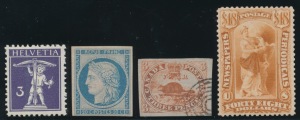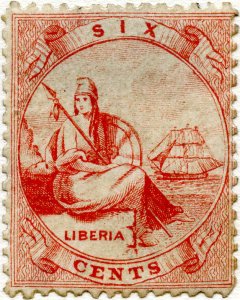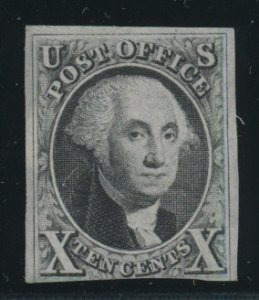 The original format in which stamps were issued was full sheets. As time went on, postal authorities began to produce stamps for sale in more convenient formats for postal users. In the era before postage meters (and now, pre-printed postage indices), coil stamps were issued as the preferred method of stamp purchases for large mailing houses. Issued in rolls (sometimes up to as many as 10,000 in a single roll), the mailing houses could place these large rolls in their mailing machines and lower their labor costs as these stamps were automatically affixed. Individuals could buy coils, too (and some countries, such as Sweden largely had coils as their preferred method of stamp production), but for the most part coils were produced mainly for business use.
The original format in which stamps were issued was full sheets. As time went on, postal authorities began to produce stamps for sale in more convenient formats for postal users. In the era before postage meters (and now, pre-printed postage indices), coil stamps were issued as the preferred method of stamp purchases for large mailing houses. Issued in rolls (sometimes up to as many as 10,000 in a single roll), the mailing houses could place these large rolls in their mailing machines and lower their labor costs as these stamps were automatically affixed. Individuals could buy coils, too (and some countries, such as Sweden largely had coils as their preferred method of stamp production), but for the most part coils were produced mainly for business use.Blog
- Posted March 22, 2018Read more »
 The original format in which stamps were issued was full sheets. As time went on, postal authorities began to produce stamps for sale in more convenient formats for postal users. In the era before postage meters (and now, pre-printed postage indices), coil stamps were issued as the preferred method of stamp purchases for large mailing houses. Issued in rolls (sometimes up to as many as 10,000 in a single roll), the mailing houses could place these large rolls in their mailing machines and lower their labor costs as these stamps were automatically affixed. Individuals could buy coils, too (and some countries, such as Sweden largely had coils as their preferred method of stamp production), but for the most part coils were produced mainly for business use.Booklets
The original format in which stamps were issued was full sheets. As time went on, postal authorities began to produce stamps for sale in more convenient formats for postal users. In the era before postage meters (and now, pre-printed postage indices), coil stamps were issued as the preferred method of stamp purchases for large mailing houses. Issued in rolls (sometimes up to as many as 10,000 in a single roll), the mailing houses could place these large rolls in their mailing machines and lower their labor costs as these stamps were automatically affixed. Individuals could buy coils, too (and some countries, such as Sweden largely had coils as their preferred method of stamp production), but for the most part coils were produced mainly for business use.Booklets - Posted March 20, 2018Read more »
Stamp design and messaging has changed over the course of the last one hundred years. For most of the nineteenth century, stamp design was simple and rarely changed. New issues were uncommon and Commemoratives unheard of. Design was meant to identify the label quickly as an official government item, a bearer bond so to speak, which indicated a prepaid service of a certain amount. The denomination needed to be clearly indicated (and most countries used color coding to help with denomination recognition- on US stamps the first class (3c) rate was red and the transcontinental rate (10c) was green), and the design needed to indicate the country of origin.Every country except Great Britain has always put its name on its postage stamps. But even in - Posted March 19, 2018
- Posted March 16, 2018Read more »
 Readers of this blog are aware by now of how fashions change in philately. Used stamps were comparatively more popular fifty years ago than they are today. Covers and postal history were essentially uncollected until about 1920, had their peak around 1980, and have since fallen to a secure but niche collecting status. Blocks and multiples were once part of everyone's collection; today a single will do.No change in philatelic tastes though has been more profound than the current affection for original gum on Nineteenth Century stamps. One hundred years ago, collectors were routinely instructed to wash the gum off of their mint stamps. Early postage stamp gums were organically based and prone to bacterial infestation which shows up as "foxing"
Readers of this blog are aware by now of how fashions change in philately. Used stamps were comparatively more popular fifty years ago than they are today. Covers and postal history were essentially uncollected until about 1920, had their peak around 1980, and have since fallen to a secure but niche collecting status. Blocks and multiples were once part of everyone's collection; today a single will do.No change in philatelic tastes though has been more profound than the current affection for original gum on Nineteenth Century stamps. One hundred years ago, collectors were routinely instructed to wash the gum off of their mint stamps. Early postage stamp gums were organically based and prone to bacterial infestation which shows up as "foxing" - Posted March 15, 2018Read more »
 In the 1940s and 1950s, the terror of the philatelic world was Elliot Perry. Perry was a knowledgeable philatelist but a personal horror. Every philatelic dispute was to him a holy crusade. A suggestion that his opinion wasn't formed on Olympus enraged him to the point that he never forgave the miscreant who doubted him. He had a dispute with Harry Konwiser, another prominent philatelist, that may have started over a Confederate cover, but as was clear in their telling of it, neither retained much sense over what the dispute was originally about. The conflagration lasted decades and was public and acrimonious in the extreme. Perry made himself unassailable, not so much because he was so knowledgeable, but because he made the public price of disagreeing with him so very high. Eventually Perry passed on and is little remembered anymore.
In the 1940s and 1950s, the terror of the philatelic world was Elliot Perry. Perry was a knowledgeable philatelist but a personal horror. Every philatelic dispute was to him a holy crusade. A suggestion that his opinion wasn't formed on Olympus enraged him to the point that he never forgave the miscreant who doubted him. He had a dispute with Harry Konwiser, another prominent philatelist, that may have started over a Confederate cover, but as was clear in their telling of it, neither retained much sense over what the dispute was originally about. The conflagration lasted decades and was public and acrimonious in the extreme. Perry made himself unassailable, not so much because he was so knowledgeable, but because he made the public price of disagreeing with him so very high. Eventually Perry passed on and is little remembered anymore. - Posted March 12, 2018Read more »
 Throughout philatelic history, writers have been predicting the next great philatelic area or specialty that will take off in price. Predictions are usually founded on one of two criteria that predict the supposed increase in popularity that the stamps will undergo. Either the economy of the country will take off creating a pool of desperate collectors eager to buy the older issues that you should have put away (if only you had listened to the prognosticator), or there is some intrinsic not fully understood rarity factor that collectors will ultimately discover which will make them eager to buy stamps that you (had you listened to the prognosticator) should have put away in quantity. The problem with predictions is that they tend to be very accurate in hindsight, and we tend to forget all the ones that haven't panned out. For the last fifty years, Brazil was always going to be the next best country. The economy was going to boom, and 120 million Brazilian collectors would enter the
Throughout philatelic history, writers have been predicting the next great philatelic area or specialty that will take off in price. Predictions are usually founded on one of two criteria that predict the supposed increase in popularity that the stamps will undergo. Either the economy of the country will take off creating a pool of desperate collectors eager to buy the older issues that you should have put away (if only you had listened to the prognosticator), or there is some intrinsic not fully understood rarity factor that collectors will ultimately discover which will make them eager to buy stamps that you (had you listened to the prognosticator) should have put away in quantity. The problem with predictions is that they tend to be very accurate in hindsight, and we tend to forget all the ones that haven't panned out. For the last fifty years, Brazil was always going to be the next best country. The economy was going to boom, and 120 million Brazilian collectors would enter the - Posted March 09, 2018Read more »
Earl P.L. Apfelbaum opened for business full time in 1930 in downtown Philadelphia. He began his business during the Great Depression and started by selling out of his own stamp collection. His business and his stock grew and grew, and by 1950, the Apfelbaum stamp firm had opened a large office on South Penn Square, opposite Philadelphia's city hall in which we had one of the largest retail stamp stores in the United States. There were thousands of books of stamps neatly arranged by country and Scott number in the price range of 25 cents to several hundred dollars per item. There were hundreds of boxes of individually priced covers arranged by country. Clients from around the world would stop in and spend an afternoon or even a few days. Once a German fellow came in while on vacation and was so enamored of the thousands of items that he could peruse that he sent the rest of his family back to Berlin and stayed for over a week.
- Posted March 06, 2018Read more »
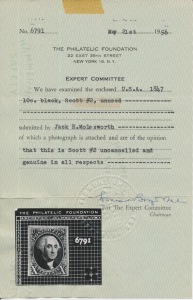 Stamp certification never provides absolute certainty to stamp buyers. Expert committees in the United States are very clear that they offer only an opinion, not a guarantee. Their legal boilerplate, which every owner signs when he commits his stamps
Stamp certification never provides absolute certainty to stamp buyers. Expert committees in the United States are very clear that they offer only an opinion, not a guarantee. Their legal boilerplate, which every owner signs when he commits his stamps - Posted March 05, 2018Read more »
Stamps have been written about since they first started being collected (for over 150 years now) so any avid philatelic reader has millions of philatelic words to brighten his cold winter evenings. Over time, readers have realized that stamp writing comes in four major types. Each collector has his favorite type and writers rarely write in more than one of these different philatelic genres.
 The first major type of stamp writing, the largest in terms of words written and books and articles published in the more high-brow journals, is technical writing. The first issue of the London Philatelist, published in 1892, had
The first major type of stamp writing, the largest in terms of words written and books and articles published in the more high-brow journals, is technical writing. The first issue of the London Philatelist, published in 1892, had - Posted March 02, 2018Read more »Throughout the Nineteenth Century, postal officials around the globe had one paranoia in common: they feared that postal patrons were soaking used stamps off envelopes, washing the cancellations, and then reusing the stamps. Philatelists who have studied thousands of stamps from the period have found scant evidence of this fraud. But that didn't keep postal authorities from devising more and more detailed plans to discourage such illegal reuse. The anti-reuse hysteria reached its apex with the grilled issues of 1867.Grills are tiny cuts made in the paper of a stamp. The stamps were printed, gummed, and, before the perforation process, fed into a device that looks like a printing press but which has metal cutting heads that make a small group
- Posted February 27, 2018Read more »
 Every kid in the 1950s and 1960s began collecting stamps the same way. We started with a Harris or Minkus worldwide album. Mine was the Statesman Deluxe, which had spaces for over 25,000 stamps. Next up the ladder was the Citation album, which had spaces for over 50,000 stamps, and to which I aspired. What made these albums interesting (and what made philately the social hobby that it was in the 1950s and 1960s for children) was the fact that these albums had illustrations; Harris and Minkus also marketed packets of 10,000 or 20,000 different stamps which contained many of the stamps that were illustrated in the album. Each packet contained not only many of the same stamps, but also many stamps that were different from one packet to the other. This meant that you and your friends could get together with your albums and trade stamps from your packets. Each of us were collecting from the same body of worldwide stamps, and it might be because such packets of worldwide stamps
Every kid in the 1950s and 1960s began collecting stamps the same way. We started with a Harris or Minkus worldwide album. Mine was the Statesman Deluxe, which had spaces for over 25,000 stamps. Next up the ladder was the Citation album, which had spaces for over 50,000 stamps, and to which I aspired. What made these albums interesting (and what made philately the social hobby that it was in the 1950s and 1960s for children) was the fact that these albums had illustrations; Harris and Minkus also marketed packets of 10,000 or 20,000 different stamps which contained many of the stamps that were illustrated in the album. Each packet contained not only many of the same stamps, but also many stamps that were different from one packet to the other. This meant that you and your friends could get together with your albums and trade stamps from your packets. Each of us were collecting from the same body of worldwide stamps, and it might be because such packets of worldwide stamps - Posted February 26, 2018Read more »
 The United States is probably the most difficult country to collect, no matter how you figure difficulty. If your measure of difficulty is cost, then US stamps win hands down; a complete collection of US stamps, only done once, would be worth near $20 million, many times the cost of any other single country. If your definition of difficulty is how hard it is to identify different major catalog numbers from one another, classic US philately has the crown there, too.No other country has turned minor plate varieties into major numbers like the Scott catalog has done. On the 1851 issue (#5/16) even plate design differences (not printing
The United States is probably the most difficult country to collect, no matter how you figure difficulty. If your measure of difficulty is cost, then US stamps win hands down; a complete collection of US stamps, only done once, would be worth near $20 million, many times the cost of any other single country. If your definition of difficulty is how hard it is to identify different major catalog numbers from one another, classic US philately has the crown there, too.No other country has turned minor plate varieties into major numbers like the Scott catalog has done. On the 1851 issue (#5/16) even plate design differences (not printing - Posted February 23, 2018Read more »
The world was very different in 1960 than it is today. The universe was only four billion years old, a considerable age but adolescent compared to the nearly 14 billion years astronomers think it is today. Black holes hadn't been theorized or discovered. There was less documentation to prove evolution, as DNA had only been worked out a few years before. No one had been to the moon. No one had color television sets. I Love Lucy hadn't been replaced by Snookie and J-Wow. Making a phone call meant sitting down in your home and dialing. There were no computers and Internet and philatelists reading articles like this would be holding newspapers in their hands. And mail meant stamps. The world around us is very different than it was when the Baby Boomers were kids.
But the stamp world has changed very little in the last fifty years. True, most collectors buy their - Posted February 22, 2018Read more »
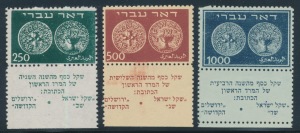 Probably nine out of ten philatelic forgeries were created in the nineteenth century. There were three primary reasons for this. First, stamps that were issued in the earliest period (before there were many stamp collectors) never existed in sufficient quantities in even the limited market by 1890. Second, early philatelic standards did not view forgeries the way we do today. Many early collectors were glad to have a “reproduction”, or a “reprint,” as they were euphemistically called, in their collection when they couldn't afford the genuine. And third, the consolidation of the German and Italian States in the late nineteenth century into the great nation states of Germany and Italy left twenty or so stamp issuing entities (that had issued many rare stamps that collectors desired) without government agencies to police counterfeits of their stamps. The stamps had been demonetized, and so, from a government point of view, counterfeits were a nuisance, not a revenue
Probably nine out of ten philatelic forgeries were created in the nineteenth century. There were three primary reasons for this. First, stamps that were issued in the earliest period (before there were many stamp collectors) never existed in sufficient quantities in even the limited market by 1890. Second, early philatelic standards did not view forgeries the way we do today. Many early collectors were glad to have a “reproduction”, or a “reprint,” as they were euphemistically called, in their collection when they couldn't afford the genuine. And third, the consolidation of the German and Italian States in the late nineteenth century into the great nation states of Germany and Italy left twenty or so stamp issuing entities (that had issued many rare stamps that collectors desired) without government agencies to police counterfeits of their stamps. The stamps had been demonetized, and so, from a government point of view, counterfeits were a nuisance, not a revenue - Posted February 20, 2018Read more »
Preprinted labels as collected by philatelists come in three broad categories: postage stamps, revenues, and Cinderellas. Postage stamps are collected by all philatelists. They are the major stamp issues of each country and are issued for the prepayment of postage. Postage Stamps are listed in many major worldwide catalogs. Collecting postage stamps has a long history and is very popular. Revenues are stamps that are issued to pay taxes, not postage. However, some countries allow the use of some stamps for both purposes; when this happens, the stamps are called Postal Fiscals and are collected by stamp collectors either mint or with postal, not revenue, cancels. Revenue collecting was once very popular and rivaled postage stamp collecting. It is very much of a niche area of the hobby now. Outside of the US philatelic domain, collecting of Revenue stamps is very unusual.
- Posted February 19, 2018Read more »
In all the many ways that the hobby of stamp collecting has changed in the last 50 years, probably the most significant has been in the de-emphasis of the "great buy" that was at the heart of philatelic writing in previous generations. Everyone wants a good deal and to get what they pay for (and maybe a little more), but most collectors today are happy to get good value when they buy and don't hope to find an Airmail Invert every time they go to the post office. This change is more significant than most may think because it has happened slowly. Fully half of Pat Herst's great book "Nassau Street" written in 1960 is about great deals that he made. And while the stories are interesting, they are his great deals, not ours, so our interest after a while seems a bit prurient and his ethical standards somewhat low. Oddly, Herst's ethics were considered sterling in his day, but by modern standards he seems to have cut ethical corners and often engaged in questionable promotions and deals that
- Posted February 16, 2018Read more »
The movie Hyde Park on the Hudson is the first mainstream movie in years in which stamps and stamp collecting play a major part. The movie is about Roosevelt in the late 1930s at his summer home in Hyde Park, and Roosevelt is portrayed as a person to whom his stamps are very important. He shows his collection to his future mistress, to the visiting King George VI, and seems to go to his stamps for succor during his most stressful times in the movie.
FDR's stamp collection was of the more ordinary kind. In the movie he takes a large magnifying glass and seems to enjoy looking at stamp designs without enjoying any of the more esoteric aspects of the hobby. The stamps shown in his collection are common and of the sort that would have been - Posted February 15, 2018Read more »
 The great stamp speculation of the late 1970s, which saw worldwide stamps at least double in price in less than five years, had a precursor in the mid 1960s. The European stamp speculations that were then the driving force in worldwide price increases had a basis in reality. After World War II, Europe was devastated. The economies of Germany and Italy were shattered, and the economic infrastructure of these countries destroyed. People first needed food, clothing, and shelter; providing this for themselves filled Europe's time in the decade after the War. As the economies of Western Europe improved, collectors began to try to find the post-war issues that they had been unable to afford when they had come out. They looked mainly for the higher values of sets and Airmail denominations for use in the United States. Earlier stamps were also in short supply. Many fine stamp collections had been damaged or destroyed in the War, and in the post war period many fine collections had been sold
The great stamp speculation of the late 1970s, which saw worldwide stamps at least double in price in less than five years, had a precursor in the mid 1960s. The European stamp speculations that were then the driving force in worldwide price increases had a basis in reality. After World War II, Europe was devastated. The economies of Germany and Italy were shattered, and the economic infrastructure of these countries destroyed. People first needed food, clothing, and shelter; providing this for themselves filled Europe's time in the decade after the War. As the economies of Western Europe improved, collectors began to try to find the post-war issues that they had been unable to afford when they had come out. They looked mainly for the higher values of sets and Airmail denominations for use in the United States. Earlier stamps were also in short supply. Many fine stamp collections had been damaged or destroyed in the War, and in the post war period many fine collections had been sold - Posted February 12, 2018Read more »
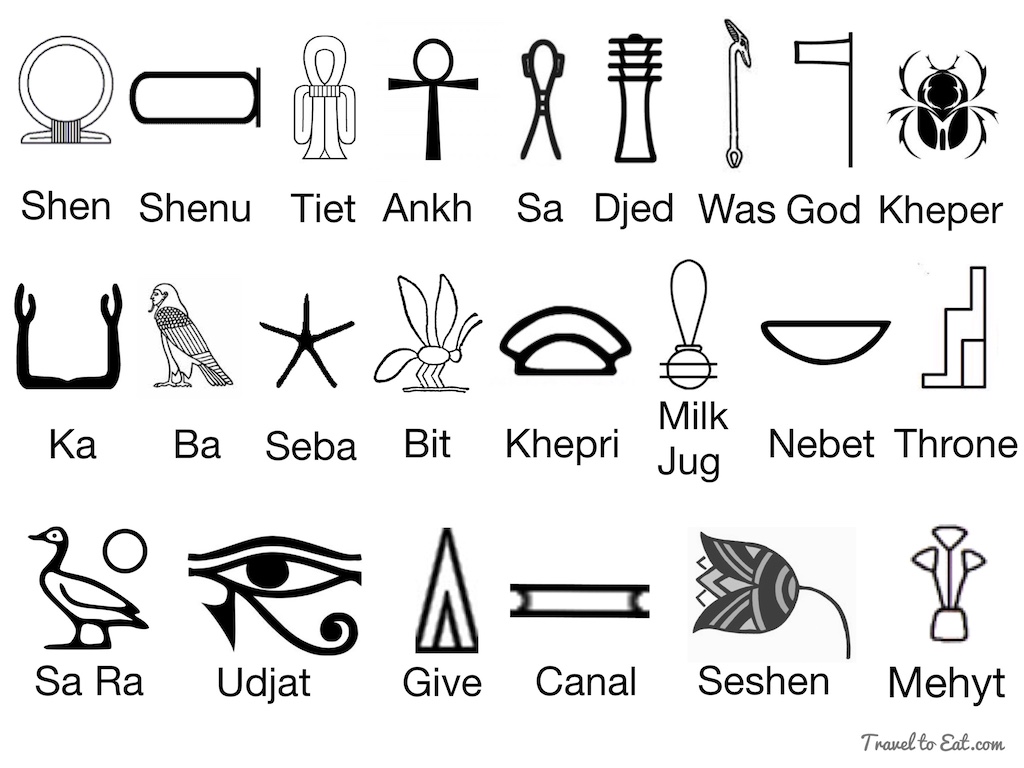 One of the great stories in cryptology over the last 200 years was working out the meaning of Egyptian hieroglyphs. This was the Egyptian writing of the old dynasties (the ones that had built the pyramids). The writing had fallen out of use and been replaced by different alphabets so that by the beginning of the common era (about two thousand years ago) there was no one left who knew how to read hieroglyphic writing. Throughout the next 1800 years, scholarly interpretations of this writing— and there are thousands of walls and obelisks with tens of thousands of lines of hieroglyphic surviving— ranged from the idea that the writing had no meaning at all as writing but was religious decoration to purely imaginary reconstructions of what the modern "scholars" wanted the hieroglyphics to say. The great breakthrough in understanding the real meaning of hieroglyphic writing came with the discovery of the Rosetta Stone in 1799. The stone carried a long government proclamation
One of the great stories in cryptology over the last 200 years was working out the meaning of Egyptian hieroglyphs. This was the Egyptian writing of the old dynasties (the ones that had built the pyramids). The writing had fallen out of use and been replaced by different alphabets so that by the beginning of the common era (about two thousand years ago) there was no one left who knew how to read hieroglyphic writing. Throughout the next 1800 years, scholarly interpretations of this writing— and there are thousands of walls and obelisks with tens of thousands of lines of hieroglyphic surviving— ranged from the idea that the writing had no meaning at all as writing but was religious decoration to purely imaginary reconstructions of what the modern "scholars" wanted the hieroglyphics to say. The great breakthrough in understanding the real meaning of hieroglyphic writing came with the discovery of the Rosetta Stone in 1799. The stone carried a long government proclamation - Posted February 12, 2018Read more »
 Early cars had mechanical crank starters. They didn't work very well, were hard to use, and required the strength of a good sized man to turn them. In cold weather they sometime "kicked", breaking the hand of the person trying to start his car. Yet even after electric starters were invented, for many years cars were equipped with both the newer starters and the older type. People were used to one thing, and even when something better came along they were reluctant to change. Such is the case now with stamp auction catalogs.Auction catalogs are cumbersome to produce. They require long lead times and are very expensive to print and mail. The average stamp auction company prints and mails about 3,000 catalogs at a cost in excess of $30,000, which is over $10
Early cars had mechanical crank starters. They didn't work very well, were hard to use, and required the strength of a good sized man to turn them. In cold weather they sometime "kicked", breaking the hand of the person trying to start his car. Yet even after electric starters were invented, for many years cars were equipped with both the newer starters and the older type. People were used to one thing, and even when something better came along they were reluctant to change. Such is the case now with stamp auction catalogs.Auction catalogs are cumbersome to produce. They require long lead times and are very expensive to print and mail. The average stamp auction company prints and mails about 3,000 catalogs at a cost in excess of $30,000, which is over $10

